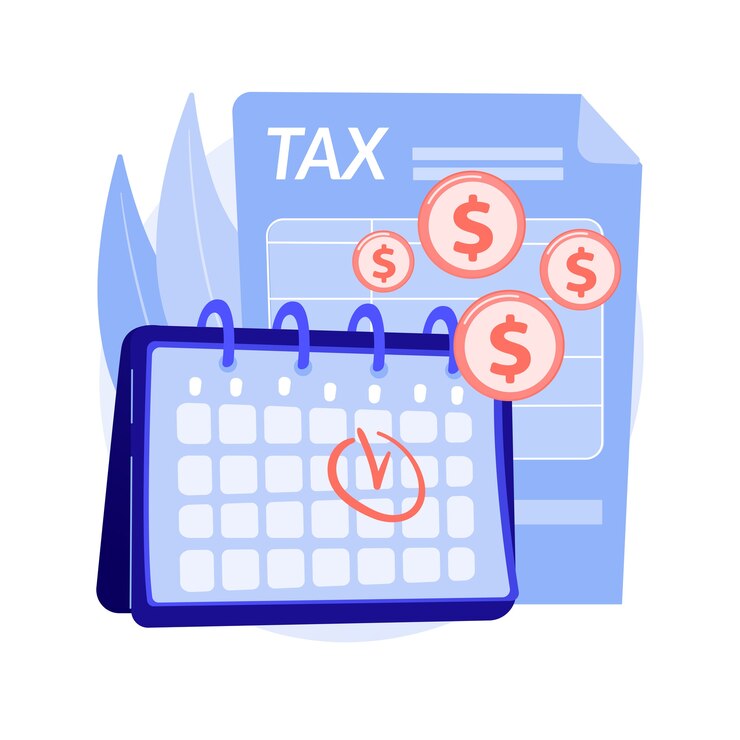Key Takeaway
- GSTR-4 is a quarterly return form for taxpayers who opt for the GST Composition Scheme, aimed at simplifying compliance for small businesses.
- The due date for filing GSTR-4 is the 30th of the month following the end of a quarter, helping to reduce the frequency of tax submissions for small business owners.
- Eligibility for the GST Composition Scheme is restricted to small taxpayers with a turnover of up to Rs. 1.5 crore, who do not engage in interstate supplies or e-commerce sales.
- Once submitted, GSTR-4 cannot be revised; errors must be corrected in the subsequent quarter’s filing, emphasizing the importance of accuracy in initial submissions.
- Late filing of GSTR-4 incurs a penalty of Rs. 200 per day (Rs. 100 under CGST and Rs. 100 under SGST), capped at 0.25% of the taxpayer’s turnover in their state.
What is GSTR-4?
GSTR-4 is a form used by taxpayers who opt for the GST Composition Scheme under India’s Goods and Services Tax (GST) law. This scheme is designed for small taxpayers to simplify their tax filing requirements. By opting into this scheme, taxpayers agree to pay a fixed percentage of their turnover as GST, which reduces the compliance burden but restricts them from claiming any input tax credit. The GSTR-4 return contains details of total sales, tax paid at the composition rate, and other declarative information. It simplifies the tax filing process by limiting the reporting requirements compared to regular taxpayers.
When is GSTR-4 due?

The due date for filing GSTR-4 is the 30th of the month following the end of the quarterly tax period. For example, for the quarter from July to September, the GSTR-4 is due by October 30th. This quarterly filing helps reduce the frequency of tax submissions for small business owners, aligning with the overall aim of the Composition Scheme to ease the administrative strain on smaller businesses.
Who should file GSTR-4?
GSTR-4 must be filed by taxpayers who are registered under the GST Composition Scheme. This scheme is particularly tailored for small taxpayers to reduce compliance burdens. Eligible taxpayers typically include small traders, manufacturers, and restaurant owners whose annual turnover does not exceed Rs. 1.5 crore (Rs. 75 lakh for Northeastern and hill states). These taxpayers must not be engaged in interstate supplies, nor should they supply non-GST goods or services. By opting for this scheme, they agree to pay GST at a fixed rate of their turnover and forfeit their right to claim input tax credits.
What is the GSTR-4 format?
The GSTR-4 format is structured to collect condensed information appropriate for the simplified tax regime under the Composition Scheme. It includes various sections:
- GSTIN: Goods and Services Tax Identification Number of the taxpayer.
- Legal Name: Legal name of the registered person.
- Quarter and Financial Year: For which the return is being filed.
- Aggregate Turnover: Turnover in the preceding financial year.
- Inward Supplies Including Supplies on Which Tax is to be Paid on Reverse Charge: Details of purchases from registered and unregistered suppliers and services on which the taxpayer pays tax directly.
- Taxable Outward Supplies Made to Consumers and Unregistered Persons: This includes total taxable sales made to consumers and unregistered businesses.
- Amendments to Details of Outward Supplies in Earlier Statements: Any corrections or changes to previously filed returns.
- Tax Rate Wise Declaration of Outward Supplies: Reporting the supplies made at different tax rates applicable under the composition scheme.
- Total Tax Payable: The total tax payable under CGST, SGST, and IGST.
- Verification: A declaration from the taxpayer verifying that the information provided is accurate.
These components simplify the record-keeping and reporting process for small businesses under the composition scheme, allowing them to comply with GST regulations efficiently.
How to File GSTR-4 Online?

Filing GSTR-4 online is a straightforward process, made accessible to small business owners through the GST portal. Here’s a step-by-step guide:
- Login to the GST Portal: Visit the official GST portal (gst.gov.in) and log in using your credentials (username and password).
- Access the Returns Dashboard: Once logged in, navigate to the ‘Services’ menu, then select ‘Returns’ and finally ‘Returns Dashboard’.
- Select the Financial Year and Return Filing Period: In the Returns Dashboard, you’ll need to select the financial year and the return filing period for which you want to file the GSTR-4.
- Prepare Online or Upload Through Offline Tool: You have the option to prepare the return directly online through the portal or prepare it offline using the downloadable utility from the GST portal and then upload it back to the portal.
- Fill in the Necessary Details: Enter all required details into the form, including details of inward and outward supplies.
- Pay the Due Taxes: Calculate and pay the total tax due based on the details of your outward supplies.
- Preview the Form: Before submission, it is crucial to preview the form to verify all entries. This helps in correcting any possible errors or omissions.
- Sign and File the Return: After reviewing, sign the return electronically using a Digital Signature Certificate (DSC) or an Aadhaar-based e-Signature to authenticate the filing.
- Acknowledgment: Once filed, you will receive an acknowledgment on your registered email and mobile number, confirming the successful submission of GSTR-4.
💡If you want to pay you GST with Credit card, download Pice Business Payment App. Pice is the one stop app for all paying all your business expenses.
Filing GSTR 4 online: What you need to keep in mind?
When filing GSTR-4 online, there are several key points to keep in mind to ensure the process is smooth and error-free. Here are some important considerations:
- Timeliness: Ensure you file the GSTR-4 by the due date to avoid any late fees or penalties. The return is due on the 30th of the month following the end of the quarter.
- Accuracy: Since the GSTR-4 cannot be revised once filed, it’s crucial to ensure all information is accurate before submission. Double-check all entries related to sales, purchases, and taxes paid.
- Internet Connectivity: Ensure you have a stable internet connection while filing the return online to avoid any disruptions during the filing process.
- Digital Signature: Have your Digital Signature Certificate (DSC) ready if required for filing. For companies, LLPs, and foreign companies, DSC is mandatory.
- Preparation: Before logging into the GST portal to file GSTR-4, prepare all necessary documents and information, such as details of sales and purchases, tax invoices, and other relevant financial records.
- GSTIN Verification: Verify that the GSTIN mentioned in the GSTR-4 is correct and corresponds to your registered business to avoid filing returns under the wrong GSTIN.
- Tax Payments: Make sure that all applicable taxes are paid before filing the return. This includes the GST due on supplies made, and any other payable amounts under reverse charge mechanisms.
- Utilize the Offline Utility: The GST portal provides an offline utility tool to prepare the return without an internet connection. This tool can help you prepare the return at your convenience and upload it once all details are correctly filled.
- Review and Preview: Utilize the ‘Preview’ function on the GST portal to check how the filed return will look. This is your last chance to review the details and make any necessary corrections before final submission.
- Record Keeping: Keep a copy of the filed return and acknowledgment for your records. This will be useful for future reference and in case of any queries from the tax authorities.
- Stay Informed: Keep up to date with any changes in GST laws and filing procedures. The GST portal and official notifications are reliable sources for the latest information.
By keeping these points in mind, you can ensure that filing GSTR-4 is a hassle-free process that meets all regulatory requirements.
How to revise GSTR-4?
Once GSTR-4 has been filed, it cannot be revised in the traditional sense that other GST returns might be. This means that if you discover any errors or omissions after filing GSTR-4, you cannot directly amend the return for that particular quarter. However, there are ways to correct mistakes in subsequent filings:
Correcting Errors in Subsequent GSTR-4 Filings
- Identify the Error: Determine the nature and period of the error. This could be an omission or a mistake in reporting sales, purchases, or the tax amount.
- Record in the Next Filing: When you prepare the GSTR-4 for the next quarter, include the adjustments for the errors identified in the previous quarter’s filing. You will need to provide an explanation for any amendments or adjustments.
- Adjust Tax Liability: If the error affects tax liability, adjust the tax amounts accordingly in the subsequent GSTR-4. If you have paid less tax than required, calculate the additional tax due and include it in your next payment. Conversely, if you have paid more, you can adjust the excess amount against future tax liabilities.
- Document the Changes: Keep detailed records of the errors and the corrections made. Documentation should include calculations and justifications for adjustments. This is important for auditing and verification purposes by tax authorities.
- Consult a Professional: If the errors are significant or involve complex issues regarding tax liabilities, it may be advisable to consult a tax professional or a chartered accountant to ensure proper compliance and correction.
Preventive Measures for Future
- Thorough Review Before Submission: To avoid the need for corrections, thoroughly review all entries in your GSTR-4 before submission. Double-check calculations, invoices, and the tax amounts.
- Use Software Tools: Consider using accounting or GST software that helps in maintaining accurate records and calculating taxes. These tools can reduce the likelihood of errors.
- Regular Reconciliation: Regularly reconcile your GST records with your bookkeeping records. This practice helps in identifying discrepancies early and correcting them in a timely manner.
By following these guidelines, you can manage and correct errors related to GSTR-4 filings effectively, ensuring compliance with GST regulations while maintaining accurate tax records.
Eligibility criteria for GST’s composition scheme
The GST Composition Scheme is designed to simplify compliance for small taxpayers by allowing them to pay GST at a fixed rate of their turnover. This scheme is especially beneficial for small businesses and traders as it simplifies the GST filing process and reduces tax liability. However, not all taxpayers are eligible to opt for this scheme. Here are the eligibility criteria for the GST Composition Scheme:
- Turnover Limit: As of the latest guidelines, a taxpayer whose aggregate turnover in the previous financial year did not exceed Rs. 1.5 crore is eligible to opt for the composition scheme. For North-Eastern states and Himachal Pradesh, the turnover limit is Rs. 75 lakh.
- Business Type: The scheme is available to traders, manufacturers, and restaurants not serving alcohol. Different rates apply depending on the type of business:
- Manufacturers and traders can pay GST at 1% (0.5% CGST + 0.5% SGST) of the turnover.
- Restaurants not serving alcohol are charged 5% GST (2.5% CGST + 2.5% SGST).
- No Interstate Sales: Businesses opting for the composition scheme cannot engage in interstate supplies of goods. All supplies must be made within the state where the business is registered.
- No E-commerce Sales: Taxpayers under the composition scheme are not allowed to sell goods through e-commerce platforms that collect tax at source.
- No Supply of Non-Taxable Goods: The taxpayer should not be involved in the supply of non-taxable goods, services, or both, as defined under GST, such as alcohol for human consumption.
- No Input Tax Credit: Businesses opting for this scheme cannot claim input tax credit (ITC) on their purchases.
- Invoices: Taxpayers under the composition scheme are not allowed to issue tax invoices. This means that they cannot collect tax from their customers and the tax cost becomes a part of the cost of the goods or services sold.
- Compliance Requirements: While regular taxpayers file monthly returns, composition taxpayers are required to file a simplified quarterly return (GSTR-4) and an annual return (GSTR-9A).
- Voluntary Opt-in: Eligible taxpayers can voluntarily opt into the composition scheme at the beginning of any financial year and must adhere to the conditions throughout that fiscal year.
To enroll in the GST Composition Scheme, eligible taxpayers must file an application using the GST portal. Once approved, they are required to comply with the regulations specific to composition taxpayers. This scheme simplifies GST compliance for small taxpayers but comes with certain restrictions on business operations and tax credits.
Late Fees and Penalty
When it comes to GST filings, including GSTR-4 for those under the Composition Scheme, late fees and penalties are applied if taxpayers fail to meet the required deadlines. Understanding these fees and penalties is crucial for maintaining compliance and avoiding unnecessary costs.

Late Fees
1. Late Fee for Delayed Filing of GSTR-4:
- A late fee is charged if GSTR-4 is not filed by the due date. The late fee is Rs. 200 per day of delay (Rs. 100 under CGST + Rs. 100 under SGST). However, for taxpayers with nil tax liability during the quarter, the late fee is reduced to Rs. 50 per day (Rs. 25 under CGST + Rs. 25 under SGST).
- The maximum late fee cannot exceed an amount calculated at 0.25% of the taxpayer’s turnover in the relevant state or union territory.
Penalties
1. Penalty for Not Filing:
- If you fail to file GSTR-4 for a given quarter, apart from the late fee, there can also be a penalty which is generally a discretionary amount decided by the GST officer, depending on the circumstances of the delay or non-compliance.
2. Penalty for Understating or Not Reporting Tax:
- If there is an under-reporting of sales or understating of tax liability, a penalty might be imposed under the provisions of GST laws. This penalty can be 100% of the tax amount evaded or not paid due to such under-reporting or non-reporting.
3. Penalty for Erroneous Refund:
- If a taxpayer obtains a refund of any CGST/SGST by fraud, the penalty can be up to 100% of the refund claimed, along with the demand for the refunded amount.
General Compliance Tips:
- To avoid penalties and fees, ensure that you file your returns on time, accurately report your taxes due, and maintain comprehensive records of all transactions.
- If you anticipate a delay in filing or payment, it is often beneficial to voluntarily disclose this to the tax authorities before they initiate any action, as this can sometimes lead to reduced penalties.
Timely and accurate GST filings, along with maintaining good compliance practices, are key to avoiding penalties and ensuring smooth operations for your business under the GST framework.
FAQs
What is the difference between regular GST registration and the special composition scheme for small taxpayers?
Under regular GST registration, taxpayers are required to file monthly returns and can claim Input Tax Credit (ITC) on their purchases. In contrast, the special composition scheme is designed for small taxpayers, like composition dealers, who wish to simplify their GST compliance. These dealers pay a fixed percentage of their turnover as GST and file returns on a quarterly basis, instead of monthly. However, they cannot claim ITC and are restricted from making interstate supplies.
How often do composition dealers need to file their GSTR-4 under the GST Composition Scheme?
Composition dealers are required to file their GSTR-4 on a quarterly basis. This means they submit their returns only four times a year, which simplifies their administrative duties compared to regular taxpayers who file returns monthly. The quarterly filing aligns with the aim of the Composition Scheme to reduce the compliance load on smaller businesses.
Are there any annual filing requirements for taxpayers under the GST Composition Scheme?
Yes, in addition to the quarterly filings of GSTR-4, taxpayers under the GST Composition Scheme are also required to submit an annual return using form GSTR-9A. This annual filing provides a summary of the quarterly returns filed throughout the fiscal year and includes any additional information that might be necessary to report on an annual basis.
What are the consequences of failing to maintain GST registration eligibility under the composition scheme?
If composition dealers fail to meet the eligibility criteria of the Composition Scheme, such as exceeding the turnover limits or inadvertently making interstate supplies, they may be required to revert to regular GST registration. This transition requires them to file monthly returns and maintain detailed transaction records. Additionally, failing to comply with the scheme’s rules can result in penalties, including those for late fees if GSTR-4 is not filed on time, calculated based on their turnover in the relevant state or union territory.
What is the due date for GST composition return?
The due date for filing GST composition returns, specifically the GSTR-4, is the 30th of the month following the end of each quarter. For example, for the quarter ending in September, the due date would be October 30th. This quarterly filing schedule helps simplify compliance for small business owners who opt for the GST Composition Scheme.
What is the time limit for composition scheme under GST?
Under the GST Composition Scheme, there is no specific “time limit” for being under the scheme; however, eligibility must be assessed and confirmed at the beginning of each financial year. A taxpayer can continue to be under the scheme as long as they meet the eligibility criteria, such as turnover thresholds and the nature of the business activities (no interstate supplies, no e-commerce sales, etc.). If a taxpayer becomes ineligible, they must switch to the regular GST scheme.
What is the rule of composition in GST?
The rule of composition in GST allows eligible small taxpayers to pay GST at a nominal rate of their total turnover and simplifies their compliance requirements. The rates vary depending on the type of business: 1% for manufacturers and traders, 5% for restaurant services. Composition dealers are restricted from claiming input tax credits, cannot make interstate sales, and cannot supply GST-exempt goods. They are also not permitted to issue tax invoices that allow the recipient to claim input tax credit.
What is the penalty for late filing GST composition?
The penalty for late filing of GST composition returns (GSTR-4) is a late fee of ₹200 per day of delay (₹100 each under CGST and SGST). However, for taxpayers who have no tax liability for the period, the late fee is reduced to ₹50 per day (₹25 each under CGST and SGST). There is a cap on the late fee, which cannot exceed 0.25% of the taxpayer’s turnover in the respective state or union territory. Additionally, if the delay in filing affects tax payments, interest may also be charged.








